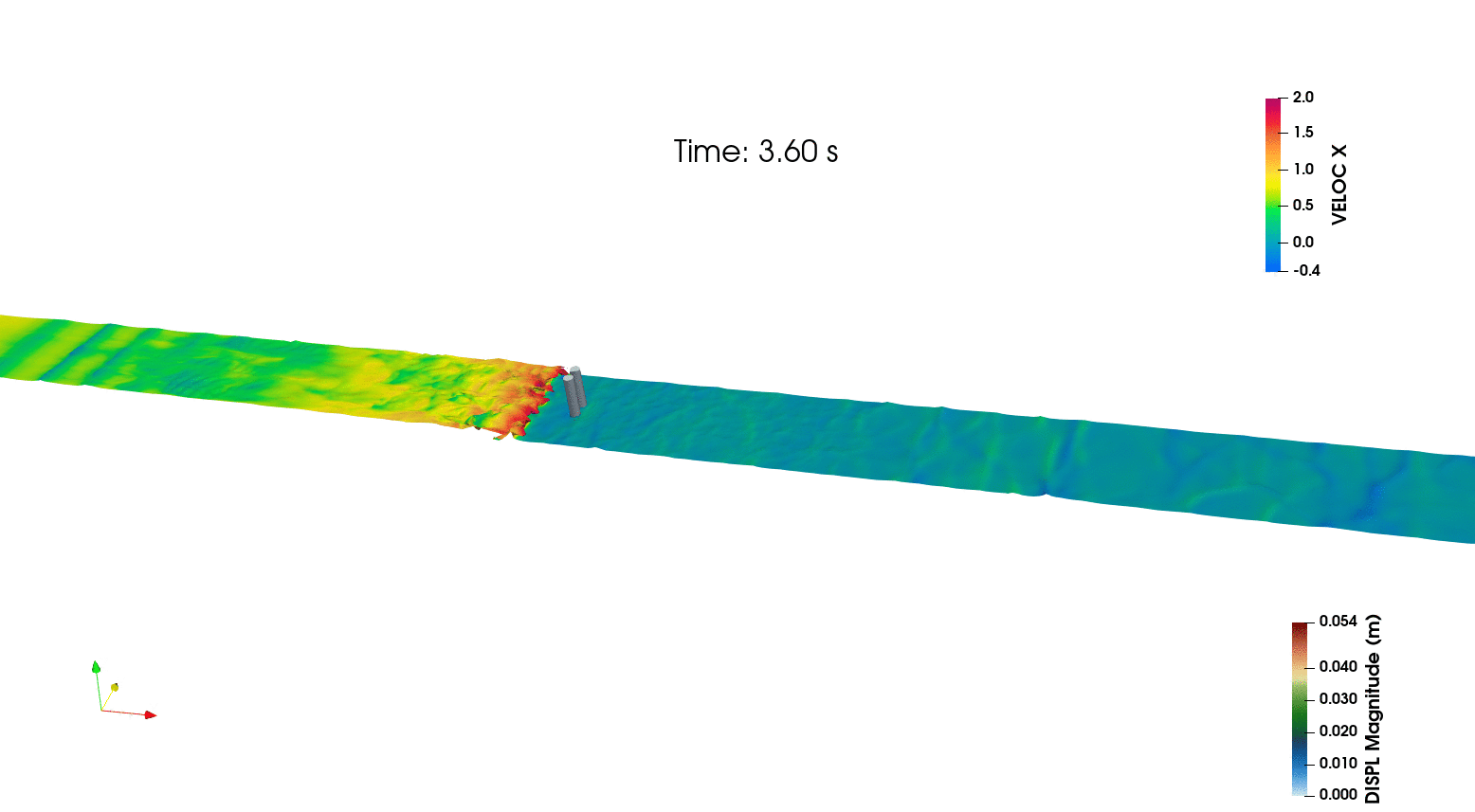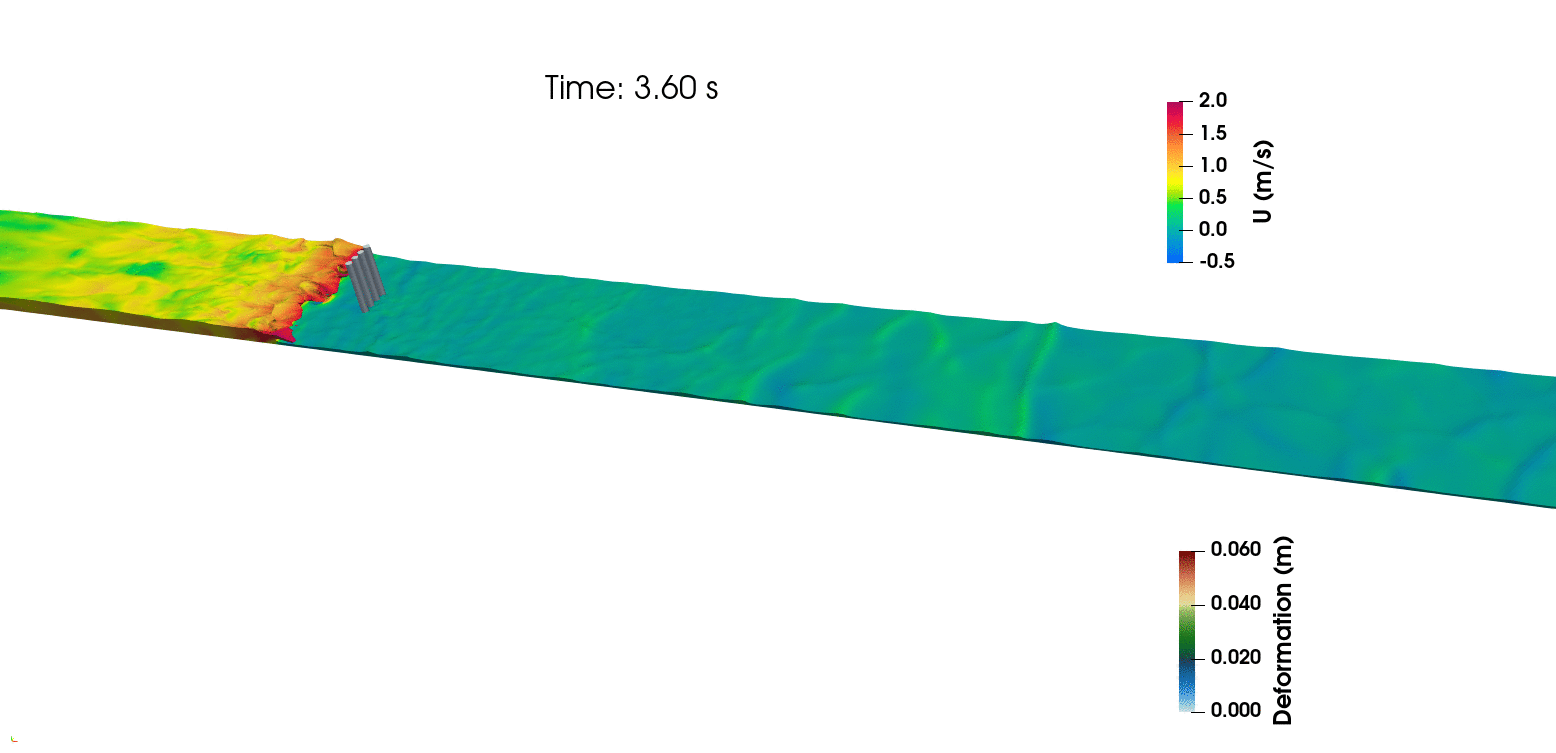Role of coastal vegetation on tsunami energy attenuation
Motivation:
Due to their unpredictability and rapid evolution from the moment they are triggered, tsunamis are considered as one of the deadliest natural hazards affecting coastal communities. Once triggered, they travel undisturbed at a very high speed in the open water, reaching the shore in up to a few hours once triggered. While tsunami wave moves fast and is, effectively, a two-dimensional wave propagating in the open water, once the flow approaches shore and moves inland, it becomes inherently three-dimensional, turbulent, with a growing boundary layer thickness that contributes to an important shear-driven erosion and sediment transport. To respond to the horrendous tsunami impact in the future, coastal communities around the Pacific and Indian Oceans are incorporating nature-based mitigation parks in their tsunami defense designs. However, the complete understanding of the hydrodynamics of the tsunami run-up through mitigation parks is still lacking. Thus, in this study we aim to numerically investigate the protective benefits of mitigation park to understand the boundary layer dynamics and hydrodynamics of full-scale three-dimensional tsunami flow while interacting with flexible vegetation to optimize the design of nature-based solutions to reduce the tsunami risk.
Results:
 Fig.1 - Dam break wave interaction with two flexible cylinders with modulus of elasticity (E) of $5 \times$ 10^4^ pa
Fig.1 - Dam break wave interaction with two flexible cylinders with modulus of elasticity (E) of $5 \times$ 10^4^ pa
 Fig.2 - Dam break wave flows over four flexible cylinders with modulus of elasticity (E) of 5 </mu> 105 pa
Fig.2 - Dam break wave flows over four flexible cylinders with modulus of elasticity (E) of 5 </mu> 105 pa
